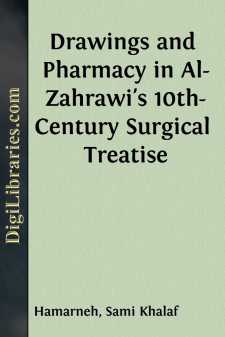Categories
- Antiques & Collectibles 13
- Architecture 36
- Art 48
- Bibles 22
- Biography & Autobiography 813
- Body, Mind & Spirit 142
- Business & Economics 28
- Children's Books 15
- Children's Fiction 12
- Computers 4
- Cooking 94
- Crafts & Hobbies 4
- Drama 346
- Education 46
- Family & Relationships 57
- Fiction 11828
- Games 19
- Gardening 17
- Health & Fitness 34
- History 1377
- House & Home 1
- Humor 147
- Juvenile Fiction 1873
- Juvenile Nonfiction 202
- Language Arts & Disciplines 88
- Law 16
- Literary Collections 686
- Literary Criticism 179
- Mathematics 13
- Medical 41
- Music 40
- Nature 179
- Non-Classifiable 1768
- Performing Arts 7
- Periodicals 1453
- Philosophy 64
- Photography 2
- Poetry 896
- Political Science 203
- Psychology 42
- Reference 154
- Religion 513
- Science 126
- Self-Help 84
- Social Science 81
- Sports & Recreation 34
- Study Aids 3
- Technology & Engineering 59
- Transportation 23
- Travel 463
- True Crime 29
History of the Division of Medical Sciences United States National Museum Bulletin 240, Contributions from the Museum of History and Technology, paper 43, 1964
Categories:
Description:
Excerpt
HISTORY of the DIVISION of MEDICAL SCIENCES
This paper traces, for the first time, the history of the Division of Medical Sciences in the Museum of History and Technology from its small beginnings as a section of materia medica in 1881 to its present broad scope. The original collection of a few hundred specimens of crude drugs which had been exhibited at the centennial exhibition of 1876 at Philadelphia, has now developed into the largest collection in the Western Hemisphere of historical objects related to the healing arts.
The Author: Sami Hamarneh is the curator of the Division of Medical Sciences in the Smithsonian Institution’s Museum of History and Technology.
By the early 1870’s, leading figures from both the health professions and the general public had begun to realize the necessity for having the medical sciences represented in the Smithsonian Institution. The impetus behind this new feeling resulted from the action of a distinguished American physician, philanthropist, and author, Joseph Meredith Toner (1825-1896), and came almost a decade before the integration of a new section concerned with research and the historical and educational aspects of the healing arts in the Smithsonian Institution.
In 1872, Dr. Toner established the “Toner Lectures” to encourage efforts towards discovering new truths “for the advancement of medical science ... for the benefit of mankind.” To finance these lectures, he provided a fund worth approximately $3,000 to be administered by a board of trustees consisting of the Secretary of the Smithsonian Institution, the Surgeon General of the U.S. Navy, the Surgeon General of the U.S. Army (only in some years), and the president of the Medical Society of the District of Columbia. The interest from this fund was to compensate physicians and scholars who were to deliver “at least two annual memoirs or essays” based on original research on some branch of the medical sciences and containing information which had been verified “by experiments or observations.”
The Secretary of the Smithsonian Institution agreed to have these lectures published by the Institution in its Miscellaneous Collections. The first lecture given by the Assistant Surgeon of the U.S. Army, “On the Structure of Cancerous Tumors and the Mode in which Adjacent parts are Invaded,” deserves credit even by current standards of scientific research. Only 10 lectures were given between 1873 and 1890 (see bibliography), despite the recommendation for at least two every year.
Figure 2.—Dr. Joseph M. Toner, a leading physician in Washington, D.C., and founder of the “Toner Lectures” for the promotion and advancement of medical education and research. In 1873, Dr. Toner became president of the American Medical Association and, in 1874, he became president of the American Public Health Association. He was a physician to St. Joseph’s Male Orphan Asylum and St. Ann’s Infants’ Asylum in Washington, D.C. In addition, he was instrumental in establishing Providence Hospital in the District of Columbia....



